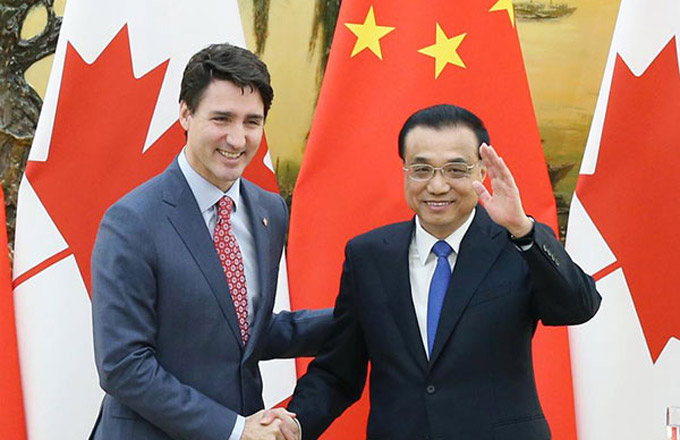ASEAN's regional trade pact gaining growing momentum
The Regional Comprehensive Economic Partnership has come into the global spotlight with the imminent demise of the Trans-Pacific Partnership Agreement. And the conclusion of the 16th round of RCEP negotiations in Indonesia last week suggests there is greater consensuses and confidence among the participants that they will be able to strike an agreement at an early date.
Chapter two of the trade pact, on small-and medium-enterprises, was completed, marking a significant progress in the RCEP since its initiation in 2012. The previous chapter, focusing on economic and technical cooperation, had been achieved with 15 rounds of negotiations.
Efforts still need to be made in other areas like goods, services, investments, intellectual property rights and movement of labor. But, fueled by enthusiasm from members including Indonesia, Malaysia, Australia and China, there is obvious optimism that the RCEP negotiations might be completed next year.
Since US President-elect Donald Trump said last month that he would scrap the TPP "from day one" in office, the inevitable US withdrawal from the TPP has rekindled hopes that the RCEP will play a leading role in regional economic cooperation and integration.
The RCEP is a far better deal than the TPP because it focuses solely on regional economic integration and trade liberalization which countries in the region believe will inject new vitality into regional economic development, and thus, the world economy.
Given that the US-led TPP deliberately excluded China, the RCEP has been perceived by some as a China-led design to counterbalance the TPP. In fact, this is a misperception as the RCEP was masterminded by the Association of Southeast Asian Nations with an aim of deepening trade ties with its six regional partners including China, Japan, the Republic of Korea, India, Australia and New Zealand.
Compared with the political hallmarks of the TPP, the RCEP reflects the shared aspiration of countries in the Asia Pacific region to promote trade and strive for common development. That explains why countries involved, China included, are accelerating steps in negotiating the regional trade pact.
With the WTO Doha round of negotiations facing a long-time impasse and protectionism raising its ugly head, globalization and trade liberalization have encountered unprecedented challenges. Countries in the Asia-Pacific region are keen on reaching a regional free trade agreement to keep the lifeblood of their economies flowing, especially with the United States and European Union seemingly intent on protectionism.
?
If completed, the RCEP will become the world's largest free trade area, covering a population of 3.5 billion and boasting a combined GDP of $23 trillion, or one-third of the world's total.
As the six non-ASEAN member countries have all signed free trade agreements with the regional bloc, the RCEP fully complies with ASEAN's vision of promoting regional integration and contributes to its blueprint of building an ASEAN Economic Community.
Even though the world's economic recovery has been dragging its feet, trade between ASEAN and its six regional partners has been on the rise in recent years. China has already signed a free trade agreement with the ROK, and is negotiating a trilateral agreement with Japan and the ROK. All this provides a good premise for the RCEP.
The level of openness under the RCEP will be higher than those under the FTA agreements reached between the six countries with ASEAN, but attention will also be paid to accommodating member states' comfort levels and feasibility.
Last but not least, unlike the TPP which was orchestrated by the United States as a political instrument and had a limited membership, the RCEP will be inclusive as ASEAN plans to invite the US and Russia to join once conditions ripen in the future.
The author is deputy editor-in-chief of China Daily Asia Pacific. [email protected]


















